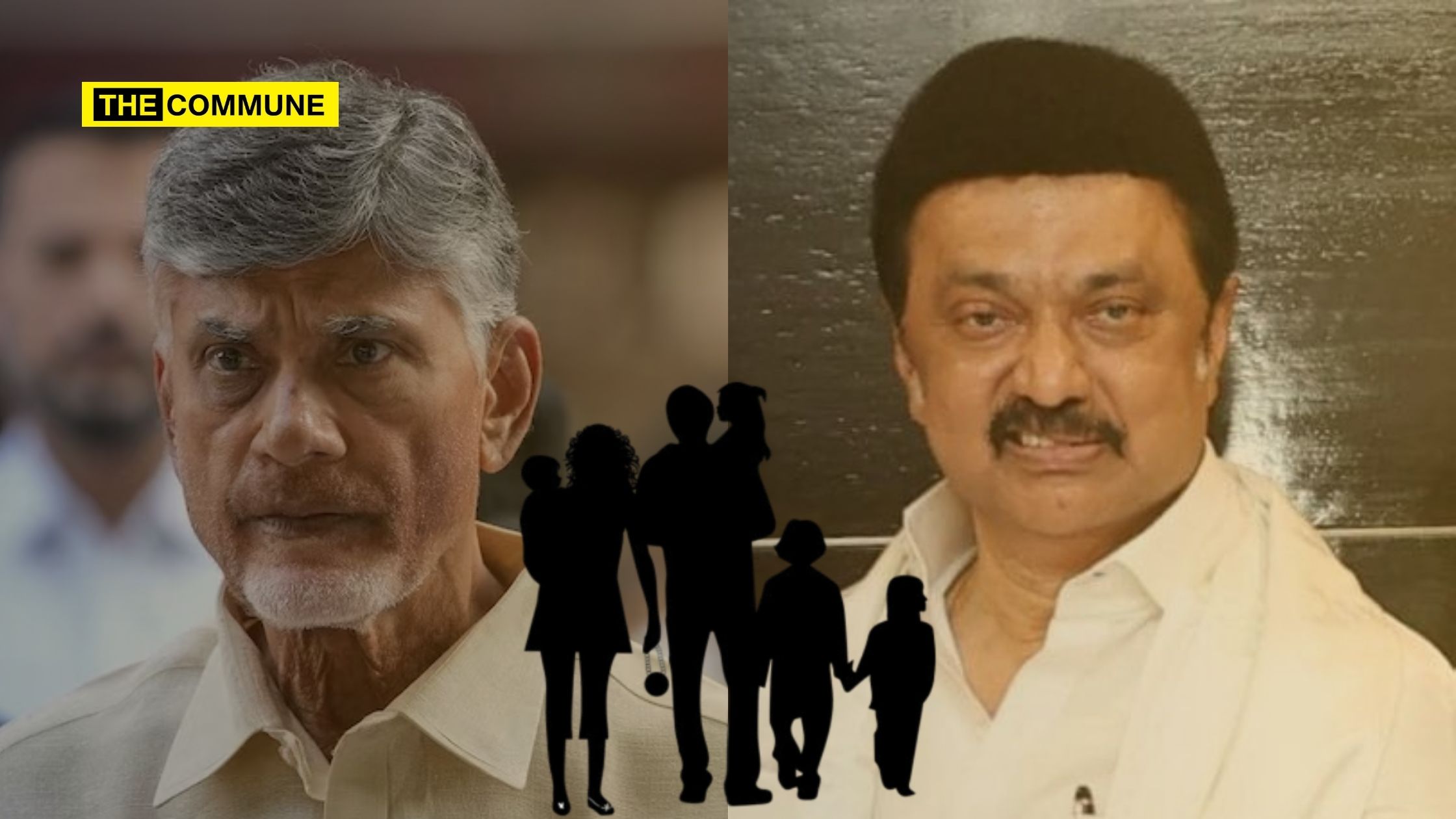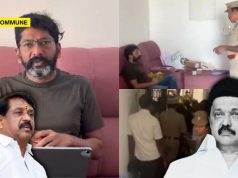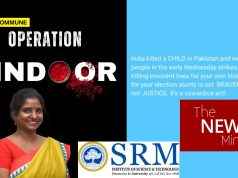
Andhra Pradesh Chief Minister N Chandrababu Naidu’s call to people to have more children and his Tamil Nadu counterpart M K Stalin’s ‘Why not 16 children’ remark has added to the clamour for demographic balance in south India, where the falling fertility rate is causing concern.
While Naidu’s stand for begetting more children is not new, his proposal to bring a law that one can contest panchayat or municipal elections only if he has more than two children underscores that he is keen to go beyond mere words.
For the last few years, the Telugu Desam Party (TDP) president has advocated an increase in the population rate in tune with the national average. However, Stalin’s call, which came close to Naidu’s latest assertion, appears to have pushed the whole debate.
Stalin on Monday suggested that perhaps newlyweds should consider having 16 children instead of ’16 forms of wealth’ as suggested in the Tamil blessing.
“That blessing does not mean you should have 16 children… but now a situation has arisen where people think they may have to, literally, raise 16 children and not a small family,” the Tamil Nadu Chief Minister said at an event where 31 couples tied the knot under government-funded marriage scheme.
Stalin’s suggestion came a day after Naidu revealed that his government was planning legislation allowing only those with more than two children to contest local body elections.
“At one time, if you had more than two children, you couldn’t contest panchayat or municipal elections. Now I am bringing a new law. Only if you have more than two children can you contest panchayat or municipal elections and get more benefits for your family,” he said at a gathering at Amaravati.
The TDP-led NDA government repealed the legislation, which barred people with more than two children from contesting local body elections, in August.
“At one time, I called to observe family planning, but I am now appealing to people to beget more children,” said Naidu while calling for maintaining demographic balance.
Voicing concern over the fertility rate in the state declining to 1.5-1.7, he called for increasing it to 2.1 per cent, which is at par with the national fertility rate.
Total Fertility Rate (TFR) is the average number of children a woman (15-49) would have if she lived to the end of her childbearing years and gave birth in line with current fertility rates.
Naidu reiterated that the population should be viewed as an asset rather than a burden.
“Population in north India is growing but it’s declining in south India. You should keep this in mind,” he had said at a public meeting in August.
“If we don’t think with foresight, the population will decrease. The ageing population will increase. If children are not born, who will care for the aged ones,” he asked.
He warned that the demographic crisis may push the state to a situation similar to that of Europe, China, and Japan, which have more ageing populations.
Andhra Pradesh is not the only state facing the situation. The average Total Fertility Rate of five southern states (Andhra Pradesh, Telangana, Karnataka, Kerala and Tamil Nadu) is 1.73 against the national average of 2.1.
In contrast, the average TFR of five big heartland states (Uttar Pradesh, Madhya Pradesh, Bihar, Rajasthan and Jharkhand) is 2.4.
According to officials, the average male reproductive age in Andhra Pradesh is 32.5 years which is likely to go up to 40 by 2047. Similarly, the female reproductive age in the state is now 29 years and this is expected to go up to 38 by 2047. It is believed the number of people who can contribute to economic development will come down drastically.
Currently, 11 percent of Andhra Pradesh’s population is aged over 60. This is likely to increase to 19 percent by 2047.
While Naidu, a key ally of the BJP-led NDA government at the Centre, voiced his views from a demographic perspective, Stalin and some other politicians from the region have been highlighting how the southern states will lose out in the delimitation of Lok Sabha constituencies because of the shrinking population.
An exercise to redraw the parliamentary constituencies based on population is due in 2026. This will increase the number of Lok Sabha seats from 543 to 753. Regional parties in the South fear that this will result in a considerable jump in the number of seats in states with higher populations; the increase in the South will be marginal.
Leaders of these parties feel that southern states are being punished for effectively implementing family planning over the last few decades, as the states with a higher population density will have higher representation in the Lok Sabha.
Bharat Rashtra Samithi (BRS) working president K. T. Rama Rao warned a few months ago that there would be a southern uprising if the representation of South Indians in Parliament decreased due to the proposed delimitation based on population.
Stating that southern states can’t be penalised for performing well to control population on the advice of the Government of India and in the interest of the nation, he said that cutting across political lines, people of South India will voice their concerns.
The BRS leader was reacting to AIMIM leader and Hyderabad MP Asaduddin Owaisi’s comment that South India is in a powder keg regarding delimitation.
“If you think you will suppress our voices and our representation in the Parliament because of this delimitation, because of the population parameters you are taking then I will promise you, you will see a southern uprise because this is unfair. This is extremely unjust because it was the Government of India that wanted Indians to control their population,” KTR told a news conference.
Referring to the reported projection of seats in Parliament after delimitation, he remarked, “What will be more atrocious is that two states, Uttar Pradesh and Bihar, after delimitation together will have more MPs than entire southern India.”
“States that have done well (in population control) because of the advice of the Government of India will now be penalised. Wisdom needs to prevail. We are all proud Indians. The South is the largest contributor to India’s economy. Nineteen per cent of the population contributes nearly 35 per cent of India’s GDP,” Rama Rao said.
–IANS
Subscribe to our Telegram, WhatsApp, and Instagram channels and get the best stories of the day delivered to you personally.




